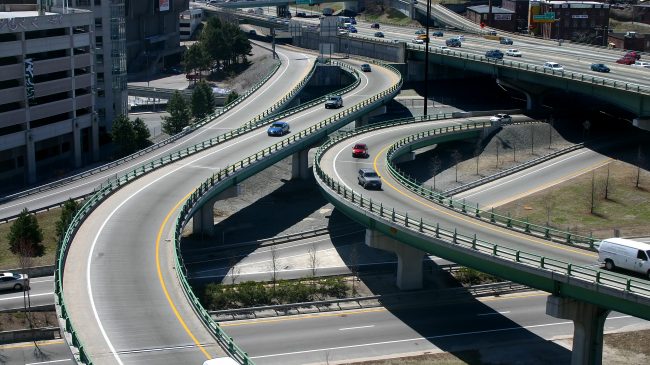Originally, America’s highway funding system was based on the users-pay/users-benefit model where drivers paid for the roads they use. The more an individual drove, the more fuel they bought, and the more they contributed to highway funding via gas taxes.
But modern cars vary significantly in their fuel efficiency, with hybrids getting over 50 miles per gallon and electric vehicles using no gas and thus paying no gas taxes at all. This, combined with governments diverting gas tax money to non-transportation purposes, is weakening the original users-pay principle behind the gas tax.
An increasingly major problem with the fuel tax is states diverting gas tax money intended to maintain roads to non-roadway purposes. During the 2018 fiscal year, for example, Maryland (ranked 39th, in overall highway performance) shifted $13 million of gas tax revenue to the Chesapeake Bay 2010 Trust Fund and $2.8 million to waterway improvements. That same year, California (ranked 43rd in overall highway performance), transferred a portion of its gas tax revenue from the State Transportation Improvement Fund highway account into the Public Transportation Account, allocating much of this funding for intercity trains and local transit programs, like ferries in San Francisco.
That’s not what drivers are supposed to get from their gas taxes. Tolls, on the other hand, treat vehicles more evenly, are easier to tie to specific highway use, and create a more precise and fair example of the users-pay principle.
Toll road revenues can and should be tied directly to the highway the tolls are paid on. The tolls can be dedicated to ongoing maintenance on that specific highway, with enforceable guidelines preventing governments or transportation departments from diverting the funding to other uses. Thus, unlike today’s gas taxes, toll revenues generated by highways could ensure that drivers pay directly for the roads they use.
Additionally, with proper guidelines in place, tolls provide a predictable source of revenue for infrastructure maintenance. Drivers, by deciding to use certain roads, show transportation authorities where new roads are needed and where investments should go.
Tolls can also help manage traffic congestion on gridlocked highways in major cities. Using variable pricing on toll roads means there can be a lane, such as express toll lanes in congested metropolitan areas, priced to ensure the toll lane is always free-flowing so drivers have the option to choose an uncongested trip.
On I-10 and I-110 in Los Angeles, the California Department of Transportation and the Los Angeles County Metropolitan Transportation Authority partnered to convert high-occupancy-vehicle (HOV) lanes into high-occupancy-toll (HOT) lanes. HOT lanes allow vehicles that do not meet that carpool lane’s standards to use the lane by paying a variably priced toll that rises and falls based on congestion.
Similarly, Florida’s Department of Transportation and the Metropolitan Planning Organizations of both Miami-Dade and Broward counties coordinated a project to convert HOV lanes into HOT lanes, with the prices set to ensure that the managed lane flows freely at least 50 miles an hour even during peak rush hours.
While gas taxes may have once served as a good example of the users-pay principle, today fuel taxes fail to address changing technology, like electric vehicles that use roads but don’t pay gas taxes. Furthermore, fuel taxes are increasingly being diverted to non-roadway projects, which often results in highways deteriorating as needed road maintenance is often postponed or scrapped altogether due to funding problems.
Gas taxes were intended to pay for the roads we use but they aren’t doing that today. Replacing gas taxes with tolls would provide a more reliable stream of sustainable revenue to build and maintain highways.


